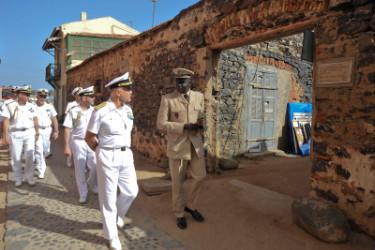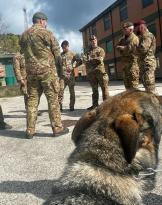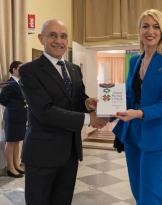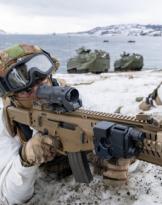From there it would begin and continue for four centuries one of the most painful and humiliating pages for humanity: the slave trade, the largest deportation operation known in history.
The island of Gorèe, which overlooks Dakar, was one of the main points from which millions of slaves departed to America. A delegation from the 30 Naval Group, led by Admiral Treu and accompanied by Colonel Philippe Dia of the Senegalese Navy visited the island and paid tribute to the memory that is perpetuated there. Gorèe, a UNESCO World Heritage Site, is today a symbol in the world.
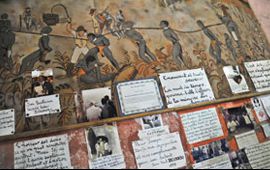 La Maison des Esclaves (house of slaves), visited by the Italian delegation, is one of many that along the coast of the island were used for detention and subsequent deportation of human beings. It housed up to two hundred slaves, men, women and children divided into separate cells and subjected to atrocious treatment and punishment.
La Maison des Esclaves (house of slaves), visited by the Italian delegation, is one of many that along the coast of the island were used for detention and subsequent deportation of human beings. It housed up to two hundred slaves, men, women and children divided into separate cells and subjected to atrocious treatment and punishment.
Today the island of Gorèe has become a place where people continue to tell the story of slavery in Africa, made up of suffering and humiliation, and of individuals who represented a mere commercial object and who were treated as such, without considering any of the harsh living conditions to which they were subjected.
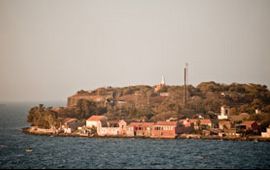
The 30 Naval Group already in the Republic of the Congo had visited the Loango bay, another historical site from which millions of slaves were forced to embark. A felt tribute aimed at witnessing the attention towards the importance and the inviolability of fundamental human rights that cannot be separated from a common feeling of respect for freedom and human dignity.
Preservation of the place as a place of exhibition today is a symbol of forgiveness and reconciliation. The Navy, with its presence, once again emphasized its ability to meet the world and open up to the people.
Source: Military Navy

